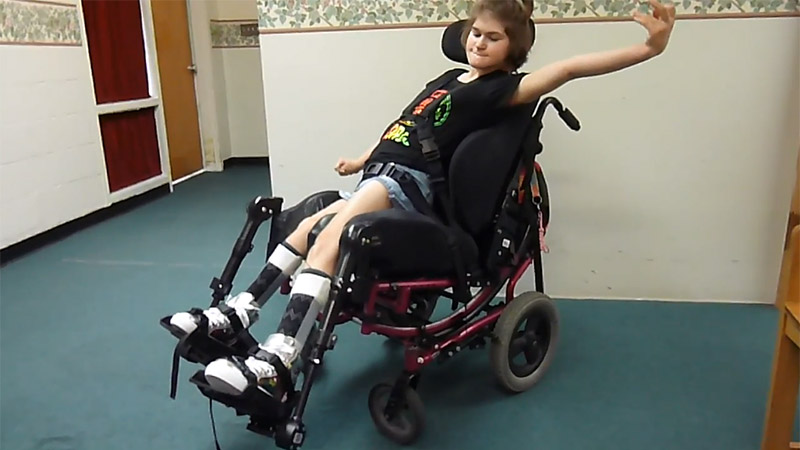
Michelle L. Lange, OTR/L, ABDA, ATP/SMS
Many clients with increased muscle tone also display dystonia. Dystonia is “characterized by involuntary, patterned, sustained, or repetitive contractions of opposing muscles, resulting in abnormal twisting body movements and abnormal postures” (Gimeno & Adlam, 2020). Movements are often asymmetrical and so dynamic seating must accommodate this. Dystonia can lead to pain (Penner, et al., 2013) and discomfort and impact function.
Amber’s dystonia increases as her extension activates.
In a recent paper, Gimeno and Adlam (2020) hypothesize that “the use of whole-body dynamic seating can improve comfort, activity, participation, and quality of life in young children with dystonic cerebral palsy.” They propose a protocol for future research on the efficacy of dynamic seating for people with cerebral palsy, as little research has been published on this specific clinical application. Adlam, et al. previously designed a dynamic seat (2015) specifically for children with dystonia and have presented on their research progress at educational conferences a number of times. Previous research (Cimolin, et al., 2009) found reduced large upper extremity movement and increased smoothness of movement in research participants who had the diagnoses of cerebral palsy and dystonia.
Bottom line? Research specific to the application of Dynamic Seating for people with dystonia has been limited, however does show a reduction in dystonic movements. Dystonia may increase as extension increases, as well. As extension forces are reduced by use of Dynamic Seating, dystonia may reduce in tandem.
Are you using Dynamic Seating with people who have dystonia or other involuntary movements? We’d love to hear your experiences! Just leave a comment below!
** This post was originally published on https://www.seatingdynamics.com/2020/10/20/dystonia-and-dynamic-seating/

